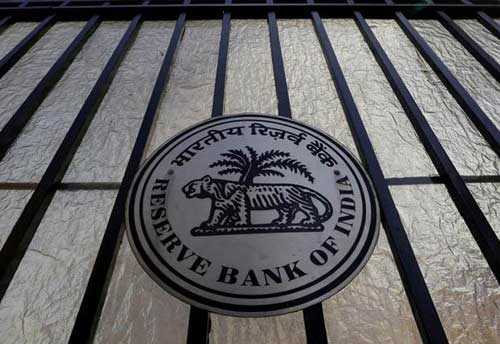RBI likely to leave policy rates unchanged till April: Report
Updated: Feb 05, 2022 12:06:39pm

RBI likely to leave policy rates unchanged till April: Report
New Delhi, Feb 5 (KNN) The RBI's rate-setting panel Monetary Policy Committee (MPC) will begin its deliberations on Monday and announce the policy moves on Wednesday (February 9) in the backdrop of a massive spike in bond yields post the Budget. Almost all major central banks are in the process of hiking rates to tame inflation.
US brokerage Bank of America Securities has maintained that the Reserve Bank will leave rates unchanged next week, recognizing growth-focused and Capex-driven fiscal expansion, which poses huge price pressure and interest rate risks later.
The key repo rate has been at 4 percent since May 2020, an all-time low, even though bond yields have been heading north for many months now.
The brokerage has also stuck to its view that the RBI will only adopt a gradual policy normalization path for now, despite bigger fiscal support and faster rate hikes expected from the US Federal Reserve.
Barring some measures to stabilize the yields, which have already risen above the 2019 levels and sniffing at the 6.9 percent mark after the Budget announced record borrowing plans next fiscal, the brokerage sees the overall domestic and external environment is unfavorable for the bonds market.
Stating that the Budget prioritizes growth over fiscal consolidation, Bank of America (BofA) analysts said they see the MPC leaving rates unchanged on February 9 when the central bank will unveil the last policy review of this fiscal, and undertake gradual tightening measures.
The market has been expecting a 25 bps reverse repo tightening. Its assumption got cemented when the Budget announced a record borrowing plan gross borrowing at Rs 14.95 lakh crore and net borrowing of Rs 11.6 lakh crore (much higher than BofA estimates of Rs 13 lakh crore and Rs 9.6 lakh crore).
Although in headline terms, the fiscal deficit is expected to fall from 6.9 percent in FY22 (up 10 bps from the revised estimate) to a budgeted 6.4 percent in FY23, the brokerage expects the provisional actuals for FY22 fiscal deficit to come in line at 6.8 percent and at 6 percent next fiscal, BofA said in a note on Friday.
The key highlight of the FY23 Budget is the massive Capex push at the cost of fiscal consolidation. While typically one expects the fiscal expansion to be inflationary, the brokerage believes it will not be so because of the positive components of the spending plan.
Revenue expenditure net of interest payments and subsidies is expected to rise by only 1 percent in FY23, while capital spending is estimated to jump 24 percent, suggesting more supply-side spending than a significant demand boost, and this does not imply any serious pressure on inflation.
It continues to see RBI keeping rates unchanged next Wednesday as the pandemic is still not behind us.
The first tightening move is likely narrowing the policy corridor by raising the reverse repo rate by 40 bps in March/April, switching to a neutral stance in April and delivering the first repo rate hike in June, and taking it to 4.75 percent by December 2022 and 5 percent by March 2023, BofA said.
For the past several months, the RBI has been a seller of bonds, from a large buyer in the first half, creating a big demand-supply gap and leading to a spike in the yields.
It did so expecting the government will allow the domestic bonds into international indices but it has not done so yet because of an impasse over taxation issues, which would have brought in at least USD 10 billion in FY22 and USD 30 billion next fiscals.
But given the more expansionary fiscal plan, as the debt manager of the government, the RBI would have to step in with liquidity-neutral OMOs to stabilize the yields when demand in auctions evaporate. (KNN Bureau)












